ART NEWS: March 04
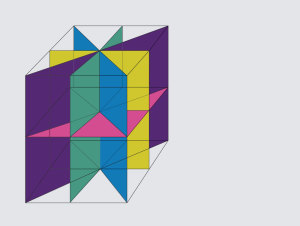 The exhibition “Notes about geometric abstraction in Spain” tries to offer clues about the crossroads between art and technology; conceptual and formal basis of many artistic practices developed in Spain since the sixties. The starting point of the exhibition is the first joint exhibition of Spanish normative art organized by the Parpalló Group and shown at the Ateneo Mercantil de València in 1960. This historic exhibition showed the aesthetic opening of Spanish art towards other paths that did not have informalism as their main objective. The Antes del arte collective, under the direction of Vicente Aguilera Cerni, proposed a questioning attitude towards aesthetic dynamics that were still very stiff and served as the beginning of practices where theory anticipated aesthetic results. Among the members of this group were Eusebio Sempere, Jordi Teixidor and José María Yturralde, leading figures in understanding the relationship between geometry, art and technology in the sixties and seventies. Info: IVAM – Instituto Valenciano de Arte Moderno, Guillem de Castro Street 118, Valencia, Duration: 11/3-17/10/2021, Days & Hours: Tue-Thu & Sat-sun 10:00-19:00, Fri 10:00-21:00, www.ivam.es
The exhibition “Notes about geometric abstraction in Spain” tries to offer clues about the crossroads between art and technology; conceptual and formal basis of many artistic practices developed in Spain since the sixties. The starting point of the exhibition is the first joint exhibition of Spanish normative art organized by the Parpalló Group and shown at the Ateneo Mercantil de València in 1960. This historic exhibition showed the aesthetic opening of Spanish art towards other paths that did not have informalism as their main objective. The Antes del arte collective, under the direction of Vicente Aguilera Cerni, proposed a questioning attitude towards aesthetic dynamics that were still very stiff and served as the beginning of practices where theory anticipated aesthetic results. Among the members of this group were Eusebio Sempere, Jordi Teixidor and José María Yturralde, leading figures in understanding the relationship between geometry, art and technology in the sixties and seventies. Info: IVAM – Instituto Valenciano de Arte Moderno, Guillem de Castro Street 118, Valencia, Duration: 11/3-17/10/2021, Days & Hours: Tue-Thu & Sat-sun 10:00-19:00, Fri 10:00-21:00, www.ivam.es
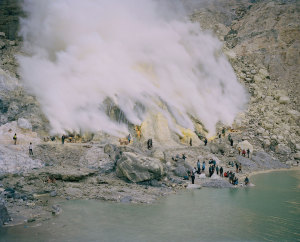 “Blind Sensorium: Antropología visual” is the result of a long-term collaboration between Armin Linke with Fundació Sorigué based on research, for the creation of an extensive project on the Anthropocene, which has been presented in the context of European cultural exhibitions and programs in recent years. The exhibition combines different aspects of the investigation, presenting a selection of elements dedicated to the relationship between planetary ecosystems, political institutions and scientific infrastructures through a visual analysis of the conflictive spaces of climate change. Armin Linke’s work focuses on documenting the effects of globalization and infrastructure on different local populations to show that the modern world is a massive profusion of data, where the material infrastructures—consisting of computer centers, data highways and server rooms—are largely invisible. The knowledge generated by this technological sensorium is characterized by the blind spots of its own implication in the accelerated exploitation of nature. Through this exhibition, the artist proposes a visual approach to climate change and its material landscape from a rigorous and reflective perspective. The video installation Blind Sensorium is a synthesis of more than ten years of fieldwork using both photography and film, they have produced a visual anthropology of the politics of climate change. Info: Center for Contemporary Creation Matadero, Pº de la Chopera, 14, Madrid, Duration: 12/3-20/5/2021, Days & Hours: Tue-Fri 17:00-21:00, Sat-Sun 12:00-21:00, www.mataderomadrid.org
“Blind Sensorium: Antropología visual” is the result of a long-term collaboration between Armin Linke with Fundació Sorigué based on research, for the creation of an extensive project on the Anthropocene, which has been presented in the context of European cultural exhibitions and programs in recent years. The exhibition combines different aspects of the investigation, presenting a selection of elements dedicated to the relationship between planetary ecosystems, political institutions and scientific infrastructures through a visual analysis of the conflictive spaces of climate change. Armin Linke’s work focuses on documenting the effects of globalization and infrastructure on different local populations to show that the modern world is a massive profusion of data, where the material infrastructures—consisting of computer centers, data highways and server rooms—are largely invisible. The knowledge generated by this technological sensorium is characterized by the blind spots of its own implication in the accelerated exploitation of nature. Through this exhibition, the artist proposes a visual approach to climate change and its material landscape from a rigorous and reflective perspective. The video installation Blind Sensorium is a synthesis of more than ten years of fieldwork using both photography and film, they have produced a visual anthropology of the politics of climate change. Info: Center for Contemporary Creation Matadero, Pº de la Chopera, 14, Madrid, Duration: 12/3-20/5/2021, Days & Hours: Tue-Fri 17:00-21:00, Sat-Sun 12:00-21:00, www.mataderomadrid.org
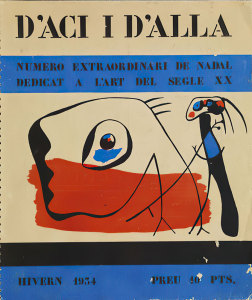 The exhibition “Miró-ADLAN. An Archive of Modernity (1932-1936)” follows the mark left by this group of artists and intellectuals on the history of modern European art. The project underscore ADLAN’s lasting impact through the present: its influence spread among artists, architects, writers, and musicians in Barcelona, especially in the post-war years and in the 1970s. In November 1932, the association known as ADLAN (Amics de l’Art Nou [Friends of New Art]) was born in Barcelona, gathering members of the Catalan petite bourgeoisie who championed a new cultural modernity. From then until June 1936, right before the outbreak of the Spanish Civil War, ADLAN organized over fifty events in an intense, heterogeneous program committed to all creative disciplines: painting, architecture, literature, chamber music, jazz, circus, film, dance, photography, etc. Their gatherings were private and held in alternative spaces, yet achieved a high public profile, partly due to their impact on the press of that time. Artists of the stature of Alexander Calder, Man Ray, Hans Arp, Remedios Varo, Pablo Picasso and Salvador Dalí showed their work under the auspices of ADLAN. Linked by ties of friendship with its promoters and an honorary member since 1933, Joan Miró became the beacon and the standard-bearer for the group, showing his most recent work on five occasions and collaborating actively in all the projects that were carried out over those years in which creative freedom was a primary objective. Info: Curators: Muriel Gómez Pradas, Jordana Mendelson and Joan M. Minguet, Assistant Curator: Dolors Rodríguez Roig, Fundació Joan Miró, Parc de Montjuïc, Barcelona, Duration: 12/3-4/7/2021, Days & Hours: Fri-Sun 11:00-18:00, www.fmirobcn.org
The exhibition “Miró-ADLAN. An Archive of Modernity (1932-1936)” follows the mark left by this group of artists and intellectuals on the history of modern European art. The project underscore ADLAN’s lasting impact through the present: its influence spread among artists, architects, writers, and musicians in Barcelona, especially in the post-war years and in the 1970s. In November 1932, the association known as ADLAN (Amics de l’Art Nou [Friends of New Art]) was born in Barcelona, gathering members of the Catalan petite bourgeoisie who championed a new cultural modernity. From then until June 1936, right before the outbreak of the Spanish Civil War, ADLAN organized over fifty events in an intense, heterogeneous program committed to all creative disciplines: painting, architecture, literature, chamber music, jazz, circus, film, dance, photography, etc. Their gatherings were private and held in alternative spaces, yet achieved a high public profile, partly due to their impact on the press of that time. Artists of the stature of Alexander Calder, Man Ray, Hans Arp, Remedios Varo, Pablo Picasso and Salvador Dalí showed their work under the auspices of ADLAN. Linked by ties of friendship with its promoters and an honorary member since 1933, Joan Miró became the beacon and the standard-bearer for the group, showing his most recent work on five occasions and collaborating actively in all the projects that were carried out over those years in which creative freedom was a primary objective. Info: Curators: Muriel Gómez Pradas, Jordana Mendelson and Joan M. Minguet, Assistant Curator: Dolors Rodríguez Roig, Fundació Joan Miró, Parc de Montjuïc, Barcelona, Duration: 12/3-4/7/2021, Days & Hours: Fri-Sun 11:00-18:00, www.fmirobcn.org
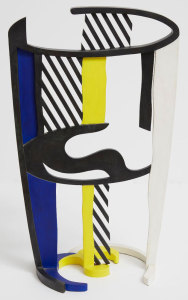 Ten works by Roy Lichtenstein are on show in Pace Gallery, this presentation features collage, drawing, painting, and sculpture from the 1970s and ‘80s, in particular showcasing Lichtenstein’s return to the iconic theme of the brushstroke across a range of different media. Borrowing from the signs and symbols of mass culture while mining images from media, advertisements, and commercial illustrations, Lichtenstein developed a singular Pop idiom that playfully challenged the boundaries of “high art” and “low culture.” Over the course of a five-decade career, Lichtenstein’s bold and graphic work was characterized by a probing investigation into the nature of art itself. Rendered in a striking, high-impact style achieved through the use of his signature Ben-Day dot patterning, Lichtenstein’s work challenged notions of visual perception, compositional illusion, and modes of representation. An antidote to the spontaneity of the artist’s hand, his disciplined and controlled use of line imitated the mechanical reproduction and cool artifice of mass-produced imagery. Info: Pace Gallery, 340 Royal Poinciana Way, Suite M333, Palm Beach, Duration: 18/3-11/4/2021, Days & Hours: Tue-Sat 10:00-18:00, Sun 11:00-16:00 (by appointment only-book here), www.pacegallery.com
Ten works by Roy Lichtenstein are on show in Pace Gallery, this presentation features collage, drawing, painting, and sculpture from the 1970s and ‘80s, in particular showcasing Lichtenstein’s return to the iconic theme of the brushstroke across a range of different media. Borrowing from the signs and symbols of mass culture while mining images from media, advertisements, and commercial illustrations, Lichtenstein developed a singular Pop idiom that playfully challenged the boundaries of “high art” and “low culture.” Over the course of a five-decade career, Lichtenstein’s bold and graphic work was characterized by a probing investigation into the nature of art itself. Rendered in a striking, high-impact style achieved through the use of his signature Ben-Day dot patterning, Lichtenstein’s work challenged notions of visual perception, compositional illusion, and modes of representation. An antidote to the spontaneity of the artist’s hand, his disciplined and controlled use of line imitated the mechanical reproduction and cool artifice of mass-produced imagery. Info: Pace Gallery, 340 Royal Poinciana Way, Suite M333, Palm Beach, Duration: 18/3-11/4/2021, Days & Hours: Tue-Sat 10:00-18:00, Sun 11:00-16:00 (by appointment only-book here), www.pacegallery.com
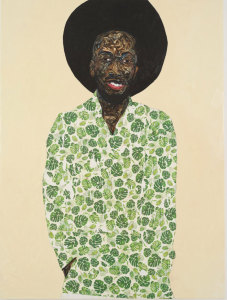 The exhibition “The Way We Are 3.0” brings together more than 190 works from different eras and contexts and addresses both contextual and formal issues. Seven thematic areas formulate artistic approaches to depicting the human being, develop a current picture of Germany, engage in multifaceted play with everyday life or the medium of the book, and investigate minimalist tendencies, photographic procedures or aesthetic contradiction. One thematic area uses film, sculpture, audio, painting, photography or installation to formulate a polymorphic picture of Germany extending from National Socialism, atmospheres of the postwar era and migration past references to Romanticism, Brutalism and celebrity culture all the way to reunification, political power, the globalized economy and right-wing tendencies. At another place in the exhibition, iconic positions of Minimal Art are complemented by current works of contemporary art and are revealingly brushed against the grain. Old encounters new and enters into a dialogue that discovers historical connections in the new and surprising novelties in the familiar. For example, Amoako Boafo appropriates “white” traditions of painting for his portrait depictions of People of Color, while Kasia Fudakowski uses a mop and bucket to take on the genre in a both humorous and clever manner. Info: Curators: Ingo Clauß and Janneke de Vries, Weserburg Museum für moderne Kunst, Teerhof 20, Bremen, Duration: 20/3/2021-23/1/2022, Days & Hours: Mon-Fri 10:00-17:00 (Visits only possible with prior booking), https://weserburg.de
The exhibition “The Way We Are 3.0” brings together more than 190 works from different eras and contexts and addresses both contextual and formal issues. Seven thematic areas formulate artistic approaches to depicting the human being, develop a current picture of Germany, engage in multifaceted play with everyday life or the medium of the book, and investigate minimalist tendencies, photographic procedures or aesthetic contradiction. One thematic area uses film, sculpture, audio, painting, photography or installation to formulate a polymorphic picture of Germany extending from National Socialism, atmospheres of the postwar era and migration past references to Romanticism, Brutalism and celebrity culture all the way to reunification, political power, the globalized economy and right-wing tendencies. At another place in the exhibition, iconic positions of Minimal Art are complemented by current works of contemporary art and are revealingly brushed against the grain. Old encounters new and enters into a dialogue that discovers historical connections in the new and surprising novelties in the familiar. For example, Amoako Boafo appropriates “white” traditions of painting for his portrait depictions of People of Color, while Kasia Fudakowski uses a mop and bucket to take on the genre in a both humorous and clever manner. Info: Curators: Ingo Clauß and Janneke de Vries, Weserburg Museum für moderne Kunst, Teerhof 20, Bremen, Duration: 20/3/2021-23/1/2022, Days & Hours: Mon-Fri 10:00-17:00 (Visits only possible with prior booking), https://weserburg.de
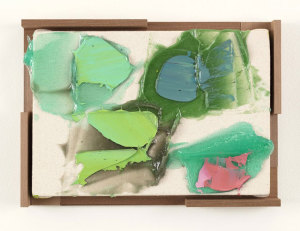 Kenjiro Okazaki is a Japanese visual artist whose works span over several genres, including painting, sculpture, as well as landscape and architecture. In his solo exhibition “TOPICA PICTUS” presents works from the period form March to June 2020 that Okazaki sheltered himself in his studio, producing over 150 works during this period of intense concentration. TOPICA PICTUS is a series that pushes the concept of the “Zero Thumbnails” series to a new level. The unprecedented motifs, titles, and bold compositions of these new works are full of surprises and discoveries to stimulate us, the recipients, to think afresh from various perspectives. The “Zero thumbnails: series are physically small but the assumed sizes vary depending on the topics. In other words, the actual size is not relevant when it is created. Due to their size, physically there are severe limitations, so called degree of freedom, making it even more critical to overcome those challenges. Info: galerie frank elbaz, 66 rue de Turenne, Paris, Duration: 20/3-15/5/2021, Days & Hours: Tue-Sat 10:00-18:00, www.galeriefrankelbaz.com
Kenjiro Okazaki is a Japanese visual artist whose works span over several genres, including painting, sculpture, as well as landscape and architecture. In his solo exhibition “TOPICA PICTUS” presents works from the period form March to June 2020 that Okazaki sheltered himself in his studio, producing over 150 works during this period of intense concentration. TOPICA PICTUS is a series that pushes the concept of the “Zero Thumbnails” series to a new level. The unprecedented motifs, titles, and bold compositions of these new works are full of surprises and discoveries to stimulate us, the recipients, to think afresh from various perspectives. The “Zero thumbnails: series are physically small but the assumed sizes vary depending on the topics. In other words, the actual size is not relevant when it is created. Due to their size, physically there are severe limitations, so called degree of freedom, making it even more critical to overcome those challenges. Info: galerie frank elbaz, 66 rue de Turenne, Paris, Duration: 20/3-15/5/2021, Days & Hours: Tue-Sat 10:00-18:00, www.galeriefrankelbaz.com
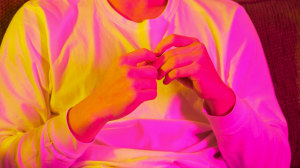 The works in the exhibition “Contamination” question what is defined as human. They undermine the idea of a self-contained individual that asserts its privileged position in opposition to the other. Living beings are inevitably entangled through innumerable relationships of collaboration and contamination; they are constructed by their environments and the very boundaries of their bodies are permeable themselves. They are bound into metabolic processes and interdependencies, sometimes toxic systems that have been and continue to be shaped by exploitation and violence, by forms of consumption and cannibalism, by mechanisms of colonialism and racism. The concept of contamination serves as a loose conceptual framework for the exhibition, bringing together works and new commissions by four artists, which in turn proceed from this framework on paths that occasionally cross. The exhibition is not intended as a commentary on the coronavirus pandemic. Instead, it more generally pursues the conflictual processes and dynamics that exist between contamination and the politics of purity. Participating Artists: Hannah Black, Rindon Johnson, Mire Lee, Eoghan Ryan. Info: Kunstverein Freiburg, Dreisamstr. 21, Freiburg, Duration: 27/3-16/5/2021, Days & Hours: Tue-Wed & Fri-Sat 12:00-18:00, Thu 12:00-20:00 (by appointment only, Book here), www.kunstvereinfreiburg.de
The works in the exhibition “Contamination” question what is defined as human. They undermine the idea of a self-contained individual that asserts its privileged position in opposition to the other. Living beings are inevitably entangled through innumerable relationships of collaboration and contamination; they are constructed by their environments and the very boundaries of their bodies are permeable themselves. They are bound into metabolic processes and interdependencies, sometimes toxic systems that have been and continue to be shaped by exploitation and violence, by forms of consumption and cannibalism, by mechanisms of colonialism and racism. The concept of contamination serves as a loose conceptual framework for the exhibition, bringing together works and new commissions by four artists, which in turn proceed from this framework on paths that occasionally cross. The exhibition is not intended as a commentary on the coronavirus pandemic. Instead, it more generally pursues the conflictual processes and dynamics that exist between contamination and the politics of purity. Participating Artists: Hannah Black, Rindon Johnson, Mire Lee, Eoghan Ryan. Info: Kunstverein Freiburg, Dreisamstr. 21, Freiburg, Duration: 27/3-16/5/2021, Days & Hours: Tue-Wed & Fri-Sat 12:00-18:00, Thu 12:00-20:00 (by appointment only, Book here), www.kunstvereinfreiburg.de
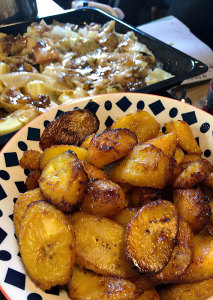 Ramaya Tegegne’s exhibition “Unusability Might be Assumed Unless there are Signs Indicating Otherwise”, centers around the artist’s experiential research into the conflicting role art institutions maintain when they promote claims to anti-racism while actively engaging in the management of racial inequalities. It is this violent disconnect between a declarative politics and the actualized material politics that Tegegne recognizes as being particularly pervasive in the arts sector. This disconnect is amplified today by a social uprising that extends from the racial equity demands of individual access and representation to transforming race relations at the systemic level of shared policy and institutional governance. Within her exhibition Tegegne’s new film work “Framer Framed”, presents a deliberation by the board of directors of an unnamed cultural institution in French-speaking Switzerland. This fictional staged board meeting revisits an actual incident that took place in 2019 when a group of Black migrant men were forced to vacate the lobby of a Swiss state-funded cultural institution, which at the time was screening a film about the exclusion and discrimination of Black migrant men in Switzerland. Info: Künstlerhaus Stuttgart, Reuchlinstraße 4b, Stuttgart, Duration: 27/3-25/7/2021, Days & Hours: Wed-sun 12:00-18:00, https://kuenstlerhaus.de
Ramaya Tegegne’s exhibition “Unusability Might be Assumed Unless there are Signs Indicating Otherwise”, centers around the artist’s experiential research into the conflicting role art institutions maintain when they promote claims to anti-racism while actively engaging in the management of racial inequalities. It is this violent disconnect between a declarative politics and the actualized material politics that Tegegne recognizes as being particularly pervasive in the arts sector. This disconnect is amplified today by a social uprising that extends from the racial equity demands of individual access and representation to transforming race relations at the systemic level of shared policy and institutional governance. Within her exhibition Tegegne’s new film work “Framer Framed”, presents a deliberation by the board of directors of an unnamed cultural institution in French-speaking Switzerland. This fictional staged board meeting revisits an actual incident that took place in 2019 when a group of Black migrant men were forced to vacate the lobby of a Swiss state-funded cultural institution, which at the time was screening a film about the exclusion and discrimination of Black migrant men in Switzerland. Info: Künstlerhaus Stuttgart, Reuchlinstraße 4b, Stuttgart, Duration: 27/3-25/7/2021, Days & Hours: Wed-sun 12:00-18:00, https://kuenstlerhaus.de
